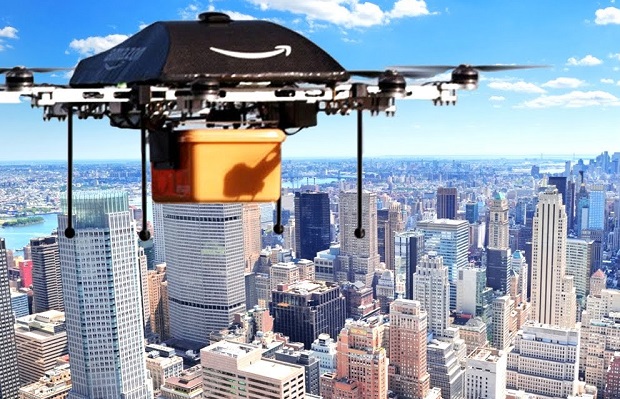Amazon has published details of its Drone delivery plans, including a the ability to track the location of the person it is delivering to by pulling data from their smartphone.
The plans, revealed by a posting in the US patent office, also indicate that the unmanned vehicles will also be able to talk to each other about weather and traffic conditions.
Amazon submitted its drone patent in September 2014, but the details are only now being published by the US Patent and Trademark Office, after it approved the ideas.
Winning patent approval does not mean that the final product will be exactly as described or that it will become reality.
Amazon is leading the effort to convince the US Federal Aviation Authority (FAA) to approve widespread commercial use of drones.
According to the plans, Amazon’s drones will be able to update their routes in real-time. A mock-up delivery screen suggests that people will be able to choose from a variety of delivery options – from “bring it to me” to nominating their home, place of work or even “my boat” as places for packages to be dropped.
The nearest drone delivery system hopper would then saddle the drone with the order and deploy it to the location of the customer’s smartphone.
Once within range, the drone then will perform a controlled landing by somehow using the camera function of the customer’s smartphone to navigate a path from the sky to the ground.
Exactly how is a little unclear, though the patent notes that the customer could theoretically land the drone by themselves.
Other details revealed include:
– Amazon will employ a variety of unmanned vehicles depending on the shape and weight of the product
– Flight sensors, radar, sonar, cameras and infrared sensors will be employed to ensure safe landing zones are found
– The unmanned vehicle would constantly monitor its path for humans or other animals and modify navigation to avoid such obstacles
Amazon had been testing its drone system in Canada where airspace regulations are more relaxed. but in March the FAA granted it permission to start testing in the US, although the drones can fly no higher than 400ft (122m) and must remain within the pilot’s line of sight.
